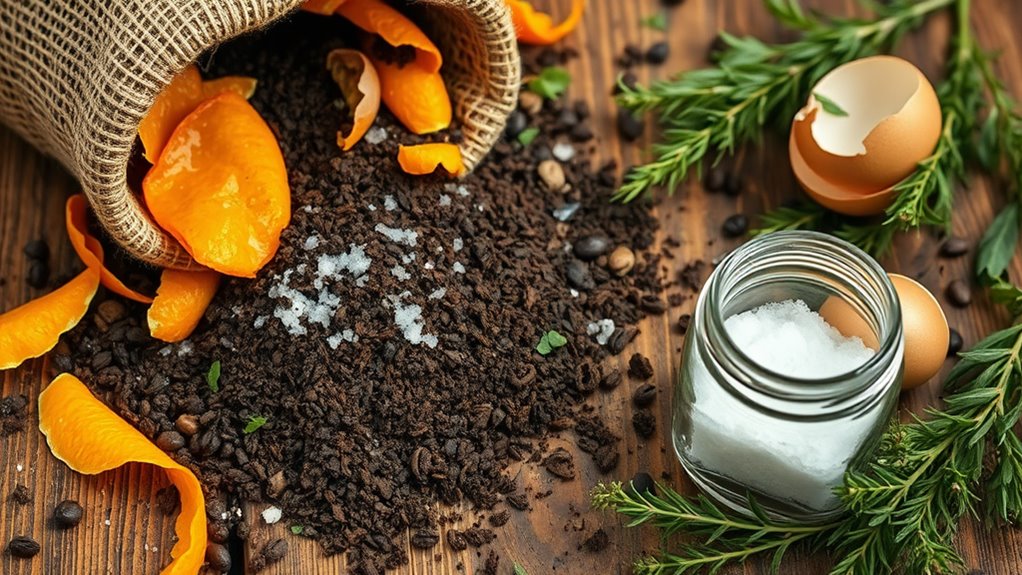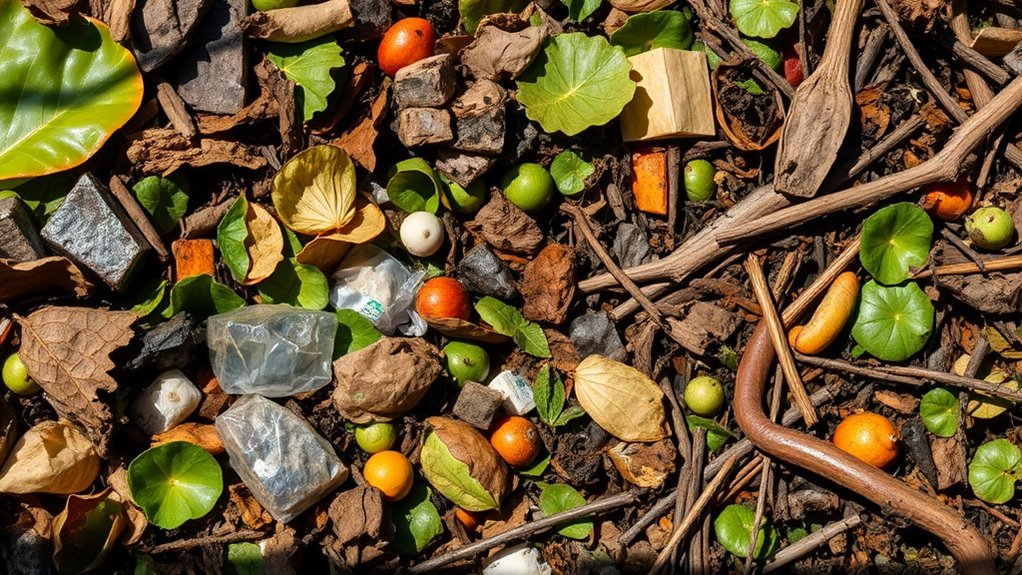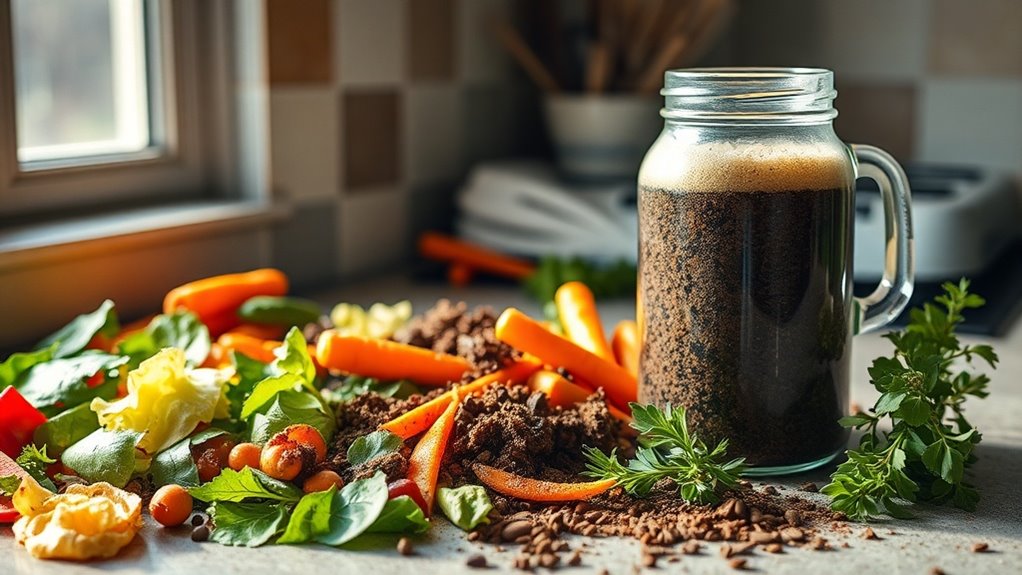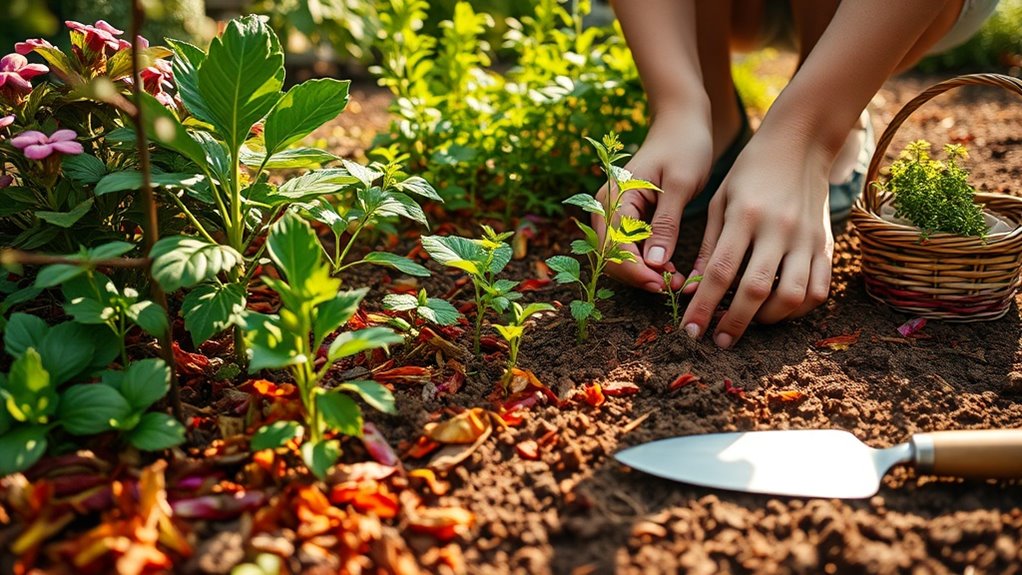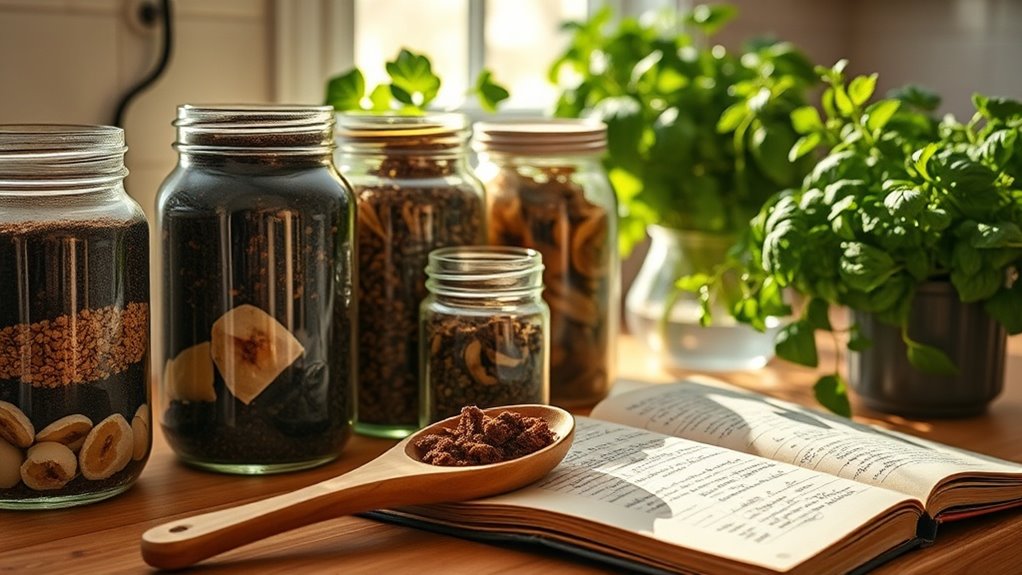The Only Fertilizer Recipe You’ll Ever Need
Fertilizers play a crucial role in plant health, providing essential nutrients that soil alone often lacks. By understanding the right combination of ingredients, you can create a powerful fertilizer that meets all your garden’s needs. This recipe simplifies the process, ensuring your plants receive balanced nutrition for vigorous growth. What you’ll find next is a detailed breakdown of ingredients and application techniques that can transform your gardening experience.
Key Takeaways
- Combine equal parts of bone meal, blood meal, and green manure for a nutrient-rich base fertilizer.
- Add two cups of compost to enhance microbial activity and improve soil structure.
- Use a nutrient ratio like 10-10-10, adjusting for specific plants as needed.
- Store the mixture in a sealed container to maintain freshness and effectiveness.
- Apply every 4-6 weeks during the growing season for optimal plant health.
Understanding the Importance of Fertilizer
Why is understanding fertilizer crucial for successful gardening? Knowing how fertilizers work helps you provide your plants with essential nutrients, ensuring healthy growth.
The best DIY fertilizer balances nitrogen, phosphorus, and potassium, promoting robust root systems and vibrant foliage.
By understanding soil composition and plant needs, you can create customized fertilizers that cater to specific crops, enhancing yield and quality.
Additionally, recognizing the timing and application methods maximizes nutrient absorption, reducing waste and environmental impact. A DIY fertilizer recipe combines natural ingredients for optimal plant health, ensuring gardeners have an effective and sustainable solution for nourishing their gardens.
Ultimately, mastering fertilizer principles empowers you to cultivate thriving gardens, turning your gardening efforts into fruitful endeavors that flourish season after season.
Essential Ingredients for Your DIY Fertilizer
When creating your DIY fertilizer, you’ll need to consider both organic and chemical options to determine what best suits your plants. Understanding the nutrient ratios—nitrogen, phosphorus, and potassium—is crucial for tailoring your mix to meet specific growth needs. Additionally, using all-natural ingredients can enhance soil health and promote beneficial microbial activity.
Organic vs. Chemical Options
While both organic and chemical fertilizers can enhance plant growth, understanding their essential ingredients is crucial for making informed choices in your DIY fertilizer recipes. Here’s a quick comparison of their components:
| Type | Key Ingredients | Benefits |
|---|---|---|
| Organic | Compost, manure, bone meal | Improves soil structure |
| Chemical | NPK blends, urea, ammonium | Fast nutrient release |
| Organic Mix | Seaweed, fish emulsion | Boosts microbial activity |
| Chemical Mix | Synthetic nitrates, phosphates | Targeted nutrient application |
Choosing the right option depends on your gardening goals and preferences.
Nutrient Ratios Explained
Understanding nutrient ratios is vital for crafting effective DIY fertilizers tailored to your plants’ needs.
The key nutrients—nitrogen (N), phosphorus (P), and potassium (K)—are represented in a ratio, like 10-10-10.
Nitrogen promotes leafy growth, phosphorus supports root and flower development, while potassium enhances overall plant health.
A balanced ratio works well for general use, but specific plants may require adjustments; for instance, leafy greens thrive on higher nitrogen, while blooming plants benefit from increased phosphorus.
Always test your soil to determine existing nutrient levels, ensuring your DIY fertilizer meets your plants’ unique requirements for optimal growth.
Step-by-Step Instructions to Create the Fertilizer
Creating your own fertilizer can be a straightforward process, and with just a few essential ingredients, you can provide your plants with the nutrients they need. Start by gathering equal parts of bone meal, blood meal, and green manure. Measure one cup of each ingredient and combine them in a large bowl. Mix thoroughly to ensure an even distribution of nutrients. Next, add two cups of compost to improve microbial activity and soil structure. Blend everything well. Additionally, using homemade garden feed can lead to healthier plants while saving money on commercial fertilizers. Store your homemade fertilizer in a sealed container, and it’ll be ready for use when you need to nourish your plants effectively.
Application Tips for Maximum Effectiveness
To achieve the best results with your fertilizer, it’s crucial to consider the timing of your application. Applying it during optimal growth periods enhances nutrient uptake, while proper dilution methods ensure the nutrients are effectively absorbed by your plants. Additionally, incorporating compost tea into your routine can provide beneficial microorganisms that further boost plant health.
Timing of Application
When’s the best time to apply fertilizer for optimal plant growth?
Timing is crucial.
Ideally, you should fertilize during the active growing season, which varies by plant type.
For most spring-flowering plants, early spring is ideal, while late spring works well for summer bloomers.
Avoid fertilizing during extreme heat or drought, as plants can’t effectively absorb nutrients.
Additionally, consider soil moisture; apply fertilizer when the soil is damp to enhance nutrient uptake.
Lastly, follow the manufacturer’s guidelines on frequency.
Regular applications every 4-6 weeks can maximize growth, but adjust based on plant response and specific nutrient needs.
Proper Dilution Methods
The right dilution method is essential for maximizing the effectiveness of your fertilizer. Properly mixing ensures nutrient availability and prevents root burn. Here’s a quick reference guide for common fertilizer types and their dilution ratios:
| Fertilizer Type | Dilution Ratio | Application Frequency |
|---|---|---|
| Liquid Concentrate | 1:10 | Every 2 weeks |
| Granular | 1:5 | Monthly |
| Organic | 1:15 | Bi-weekly |
| Slow-release | Ready-to-use | Every 3 months |
| Foliar Spray | 1:20 | Weekly |
Adhering to these guidelines will enhance nutrient absorption and plant health.
Frequency of Application for Best Results
Regularly applying fertilizer is crucial for achieving optimal plant health and growth.
To maximize nutrient uptake, aim to fertilize every 4 to 6 weeks during the growing season. This timing allows plants to absorb essential nutrients effectively.
Adjust your frequency based on specific plant needs; for instance, heavy feeders may require more frequent applications. Always monitor your plants for signs of nutrient deficiency or excess, and alter your schedule accordingly.
In cooler months, reduce frequency to avoid over-fertilization, as plants’ growth slows. Additionally, consider seasonal planting as it can influence the nutrient requirements of your plants.
Consistency is key, so establish a routine that aligns with your plants’ growth cycles for best results.
Troubleshooting Common Fertilizer Issues
Start by observing your plants for signs of nutrient deficiencies or excesses.
Yellowing leaves or stunted growth often indicate a lack of essential nutrients, while burnt leaf tips can signal over-fertilization.
Consider these troubleshooting tips:
- Test soil pH to ensure nutrient availability.
- Adjust your application frequency based on plant needs.
- Use a balanced fertilizer to cover multiple nutrient bases.
- Monitor environmental factors like water and light that affect nutrient uptake.
Additionally, keep an eye out for signs of acidic soil as this can significantly impact nutrient availability and overall plant health.
Benefits of Using Natural Fertilizer in Your Garden
Using natural fertilizer in your garden offers numerous advantages that can enhance plant health and soil quality.
These fertilizers improve soil structure, promoting better aeration and water retention, which benefits root systems.
They also introduce beneficial microorganisms that boost nutrient availability, fostering a thriving ecosystem.
Unlike synthetic options, natural fertilizers release nutrients slowly, reducing the risk of leaching and ensuring sustained plant growth.
Moreover, they often contain essential micronutrients that support overall plant vigor. Additionally, banana peels are rich in potassium and phosphorus, which are vital for promoting strong root development and flowering in plants.

